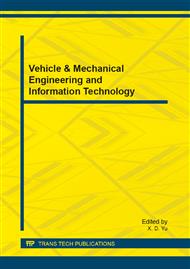p.13
p.17
p.25
p.29
p.33
p.42
p.46
p.53
p.57
Assessment of Redundant Steel Structural Systems Considering Effects of Member Strength Variability on the System
Abstract:
In the present study, the failure of basic redundant steel structural systems is investigated. By considering that each member of the system has brittle, semi-brittle, or perfectly plastic properties, the statistical behavior of perfectly brittle systems, semi-brittle systems, perfectly plastic and combination systems are evaluated, and the effects of the coefficient of variation (CoV) of members on the systems are investigated. Uncorrelated strengths with the same mean are considered for the system elements. By using the Monte Carlo simulation (MCS) method, maximum strength, yield strength and residual strength of the redundant steel structural systems are evaluated. The CoV of member strength is an essential parameter for statistical assessment of steel structural systems. In this study, the strength is defined random variable a selected normal distribution represents the random variable, for the member strength. The deformation capacity of the member is strongly depends to the characteristics of member strength, but the post failure factor has deterministic values, only for the combination system. The post failure factor is a random variable that represents the uncertainty, uniform distribution is selected to represents random variable, in combination system post failure factor.
Info:
Periodical:
Pages:
33-41
Citation:
Online since:
December 2012
Authors:
Keywords:
Price:
Сopyright:
© 2013 Trans Tech Publications Ltd. All Rights Reserved
Share:
Citation:


